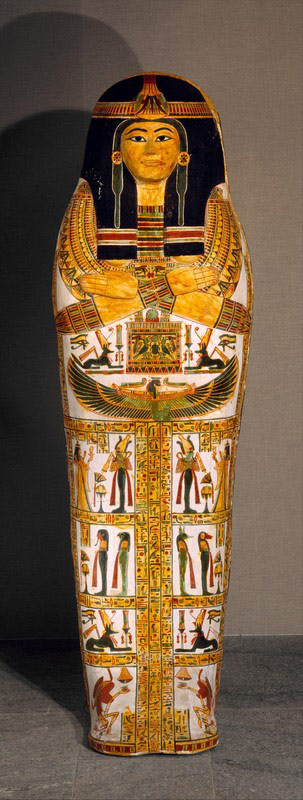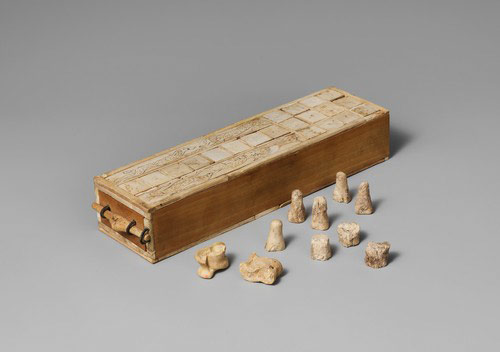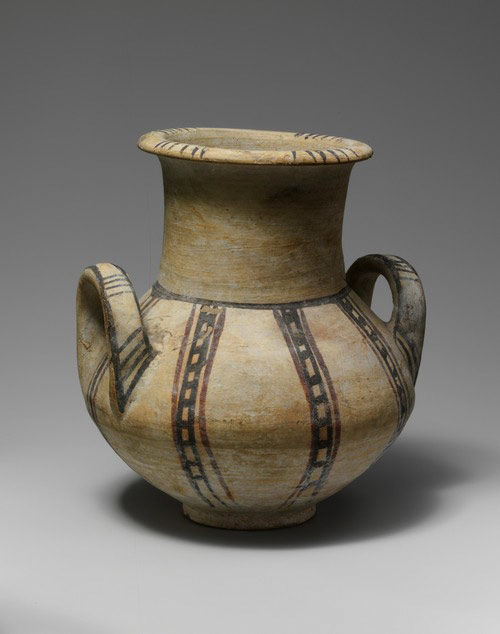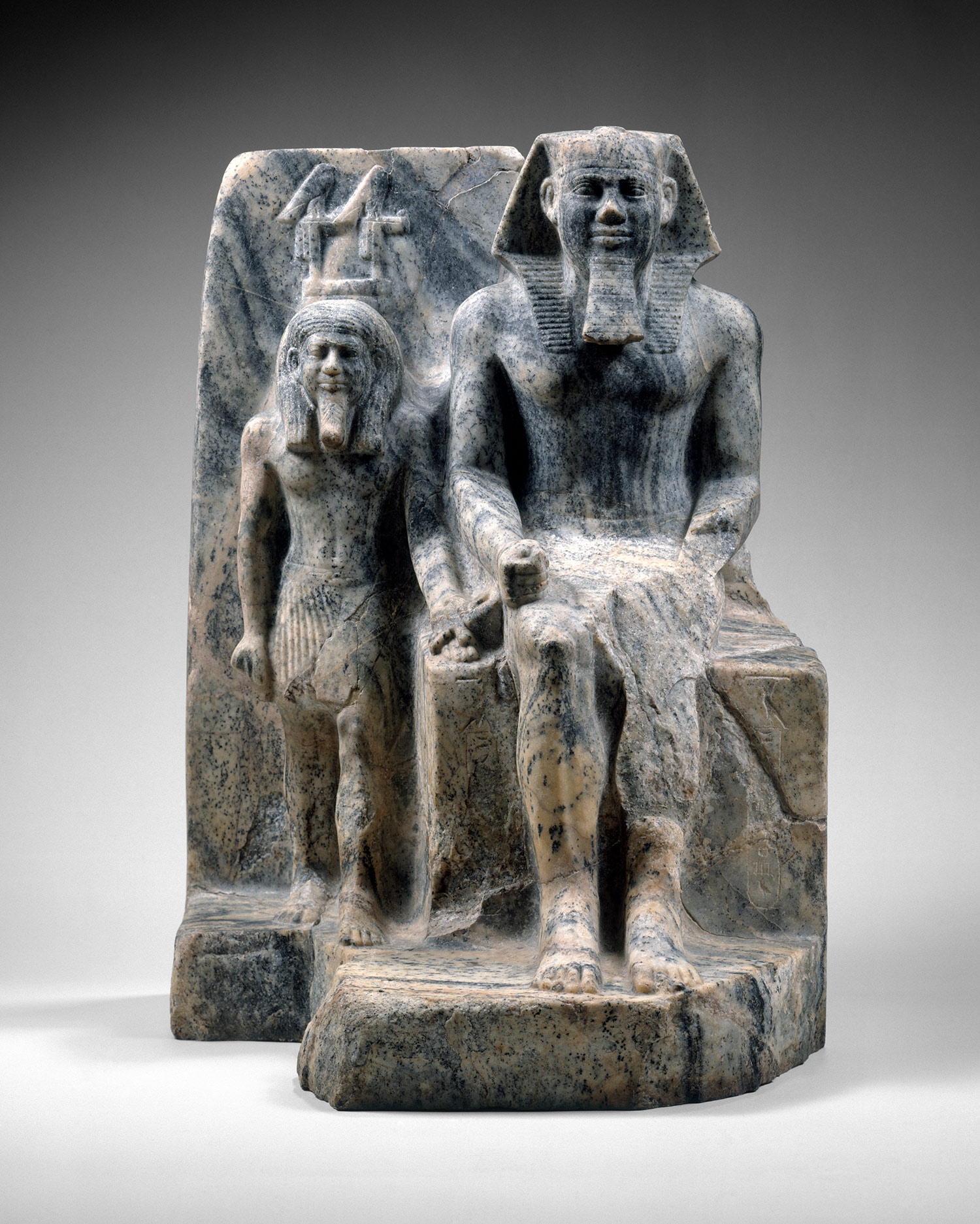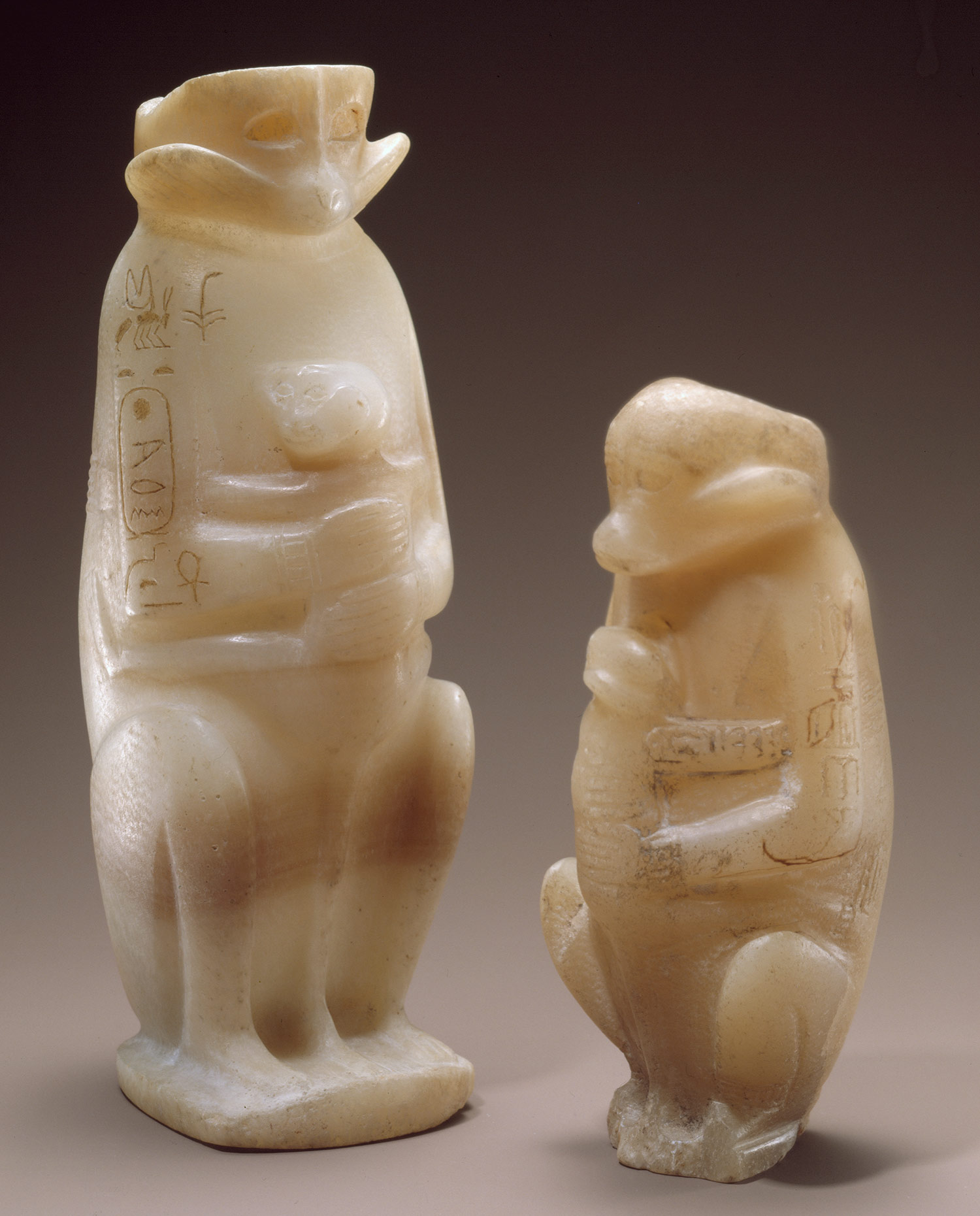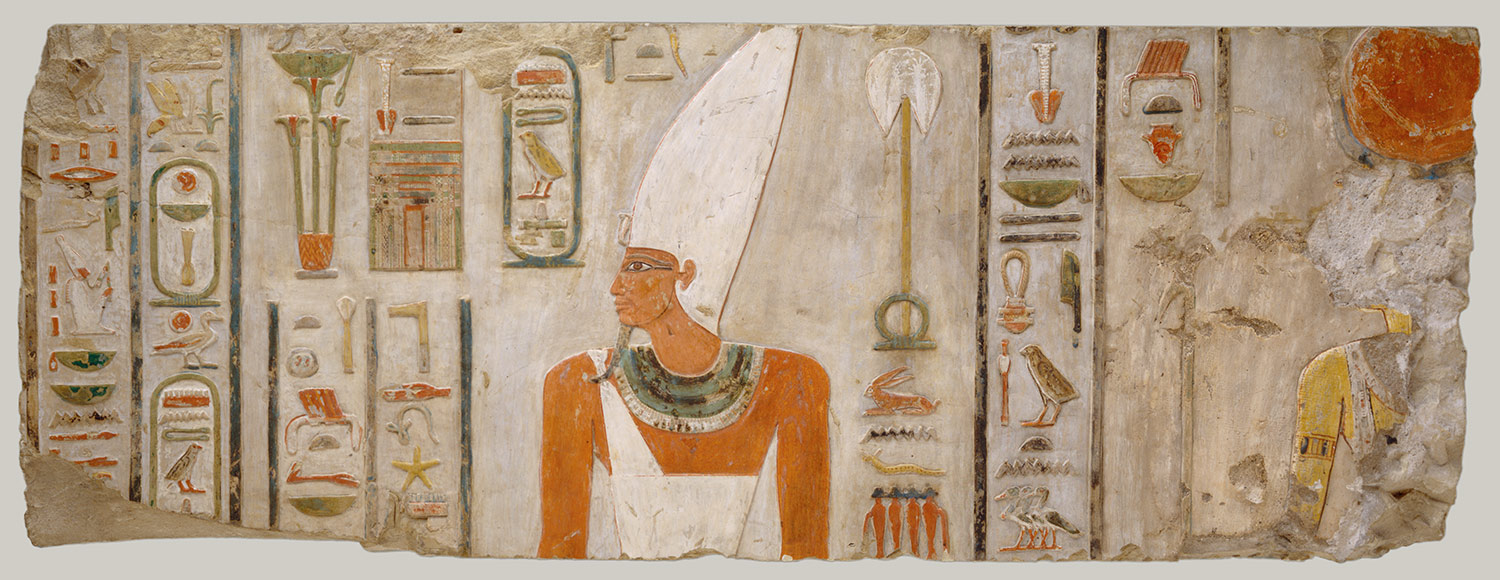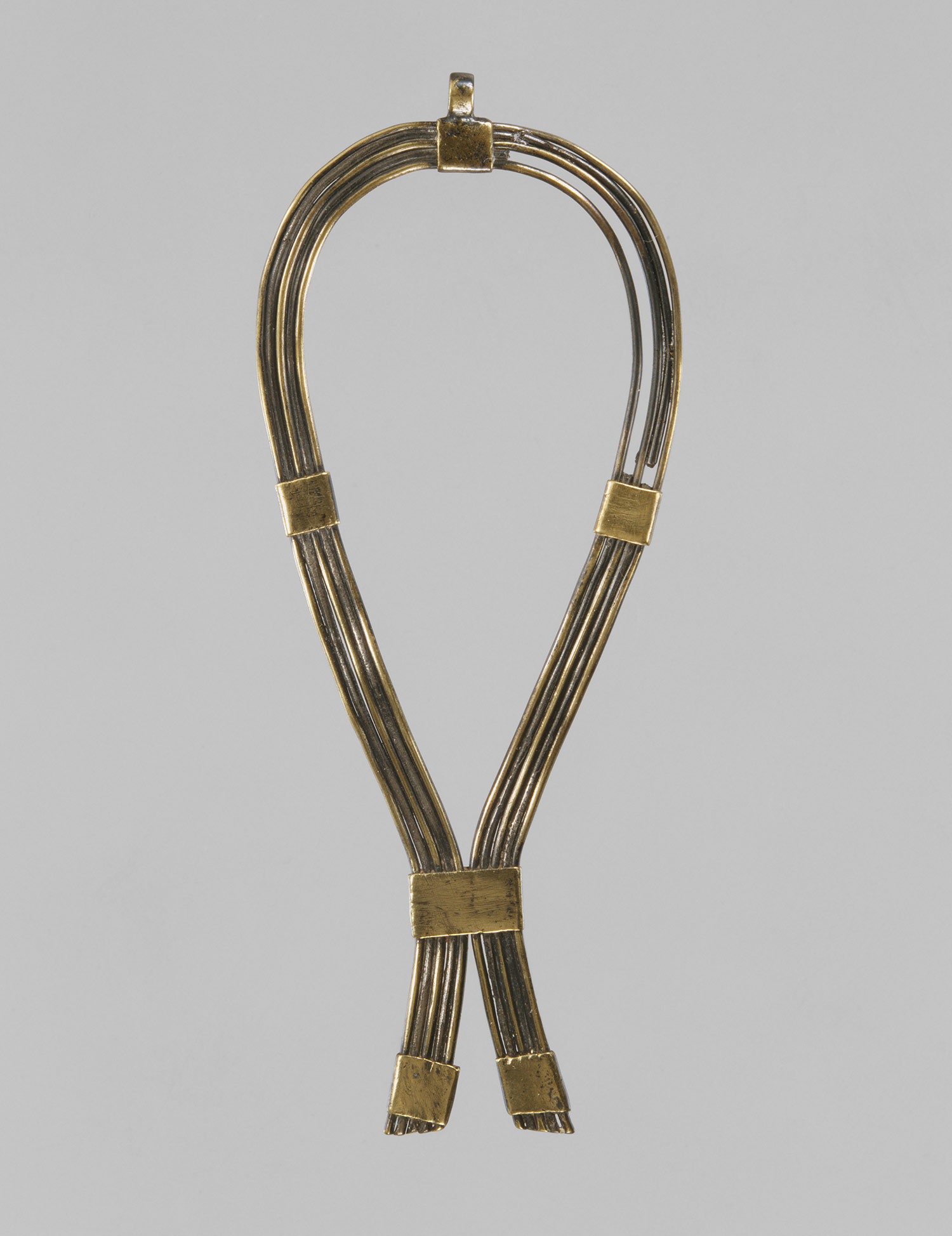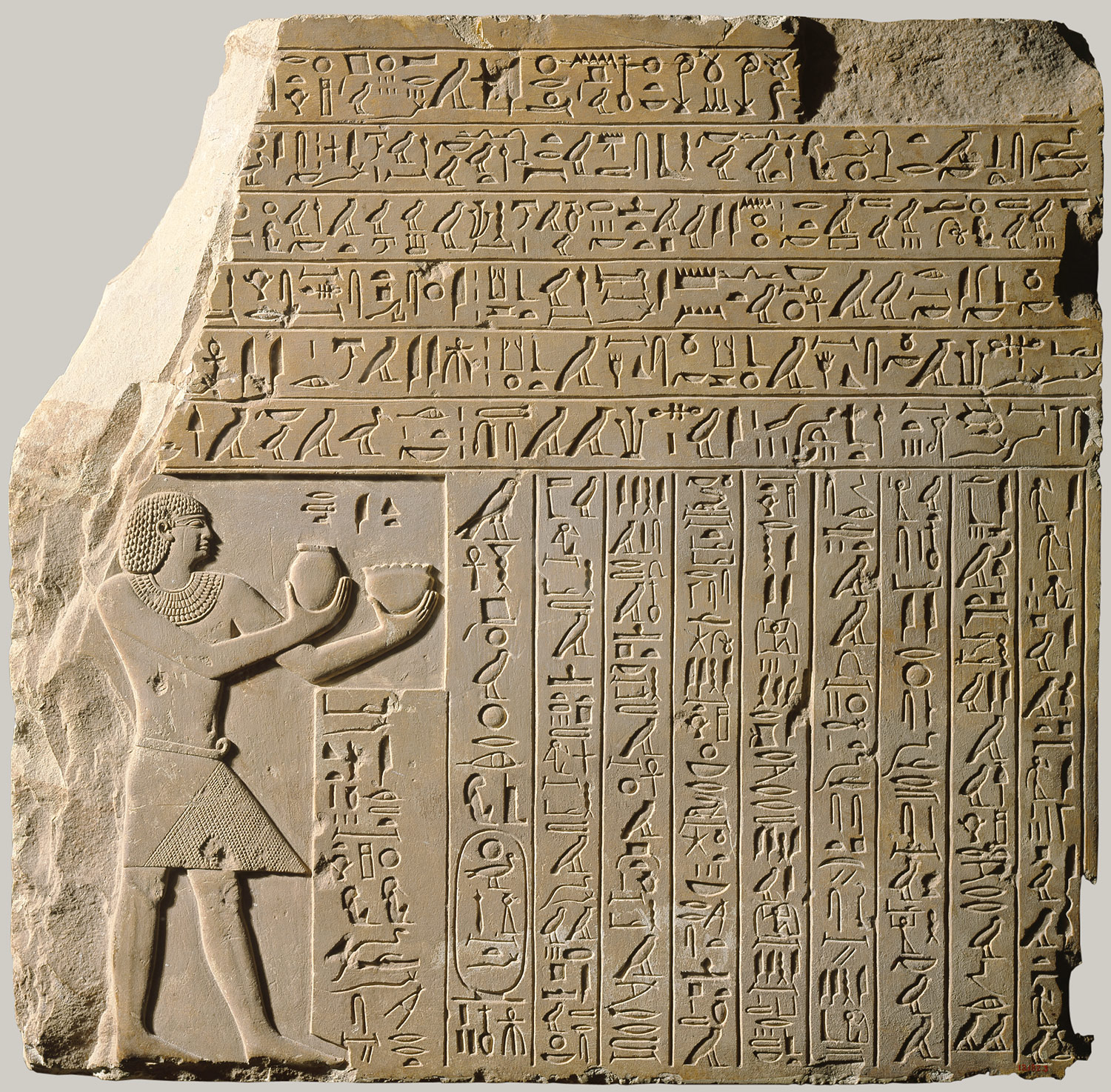The flotilla consists of five boats. The deceased's barque is the
smallest of the five and is situated in the middle. It is
surmounted by a white catafalque which covers the mummy and its coffin.
The four other barques serve to haul the one with coffin. These have
wooden cabins on their decks, whose sides have been painted. Close to
the prow is a small platform , surrounded by boards, where the pilot and
the depth sounder stand .
At the stern is a helmsman. Notice that, the stern of the vessels are
decorated with the usual papyrus umbel, the prow includes rare
representations of the head of a lion.

The barque situated behind the one with the deceased shows the rowers in action, which confirms (as well as the absence of a sail) that the boat is moving down and across the Nile from Thebes. At its prow a small scene takes place, very much full of life, which shows the depth sounder (for whom the artist has forgotten to represent the depth gauge) and the pilot.

The pilot is turned towards the rear, and, with his right hand elevated, give his instructions to the helmsman. Obviously about avoiding grounding on one of the innumerable and moving sandbars of the river. Several men are seated on the cabin, located in the middle of the boat, possibly waiting to resume their task within the funeral cortege; unless they are sailors at a loose end?

Did Userhat make this pilgrimage during his lifetime? It is impossible to know. But, no matter! Because having represented it on the wall of his tomb, the activation of the Egyptian image gives it reality, not only once, but renewed during eternity.


The barque situated behind the one with the deceased shows the rowers in action, which confirms (as well as the absence of a sail) that the boat is moving down and across the Nile from Thebes. At its prow a small scene takes place, very much full of life, which shows the depth sounder (for whom the artist has forgotten to represent the depth gauge) and the pilot.

The pilot is turned towards the rear, and, with his right hand elevated, give his instructions to the helmsman. Obviously about avoiding grounding on one of the innumerable and moving sandbars of the river. Several men are seated on the cabin, located in the middle of the boat, possibly waiting to resume their task within the funeral cortege; unless they are sailors at a loose end?

Did Userhat make this pilgrimage during his lifetime? It is impossible to know. But, no matter! Because having represented it on the wall of his tomb, the activation of the Egyptian image gives it reality, not only once, but renewed during eternity.









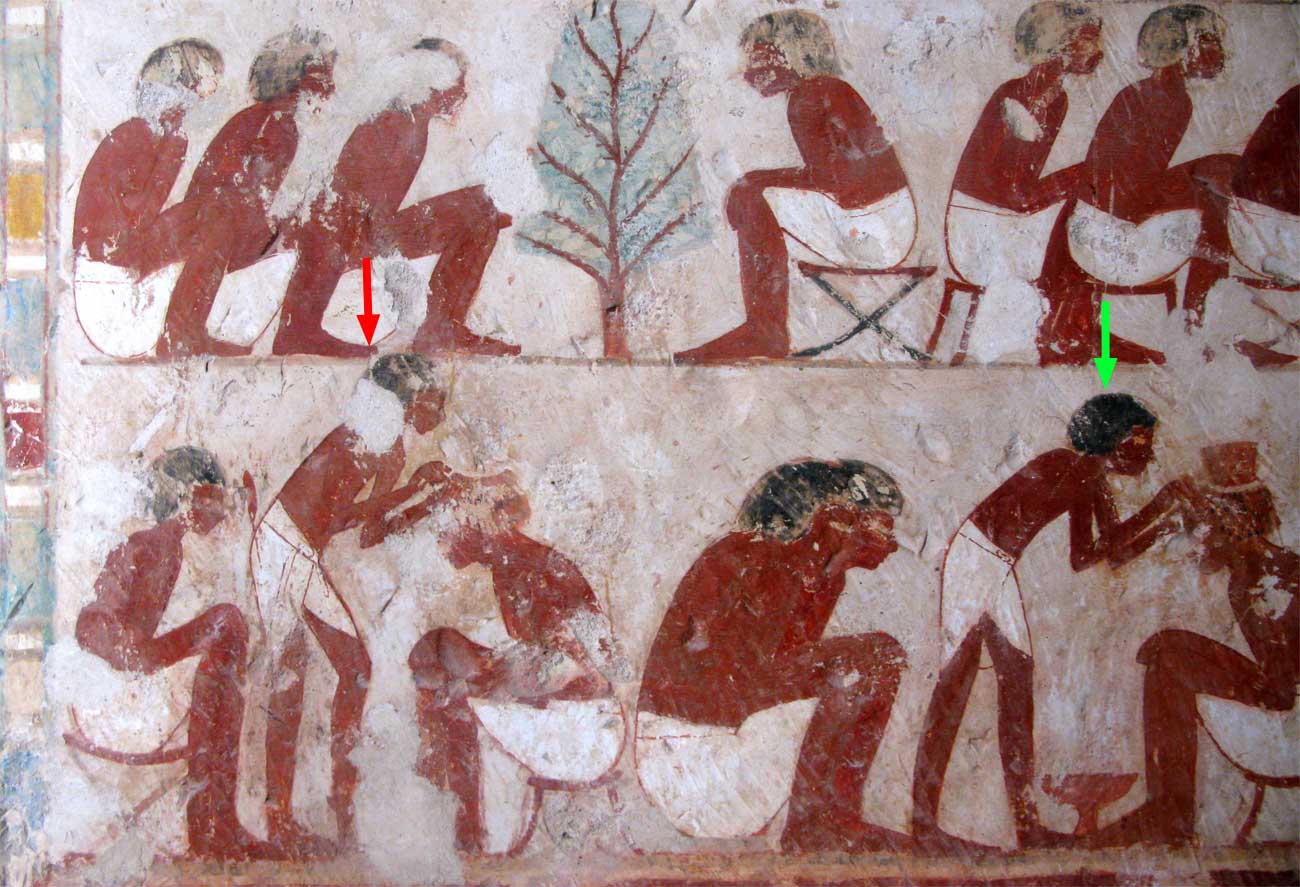 No one seems to have noticed that the barber
on the left presents an atrophy of the lower part of his left leg, which
typically indicates an after-effect of polyomyelitis .
This shows well on examining the images carefully: the member is
atrophied, and the foot didn't disappear into the small damaged area
which has removed the feet of the man seated in front of him, but is
vertical, with the very obvious heel. The general attitude of the
subject is also evocative, and differers from that of his healthy
colleague on the right , and the above stated
No one seems to have noticed that the barber
on the left presents an atrophy of the lower part of his left leg, which
typically indicates an after-effect of polyomyelitis .
This shows well on examining the images carefully: the member is
atrophied, and the foot didn't disappear into the small damaged area
which has removed the feet of the man seated in front of him, but is
vertical, with the very obvious heel. The general attitude of the
subject is also evocative, and differers from that of his healthy
colleague on the right , and the above stated 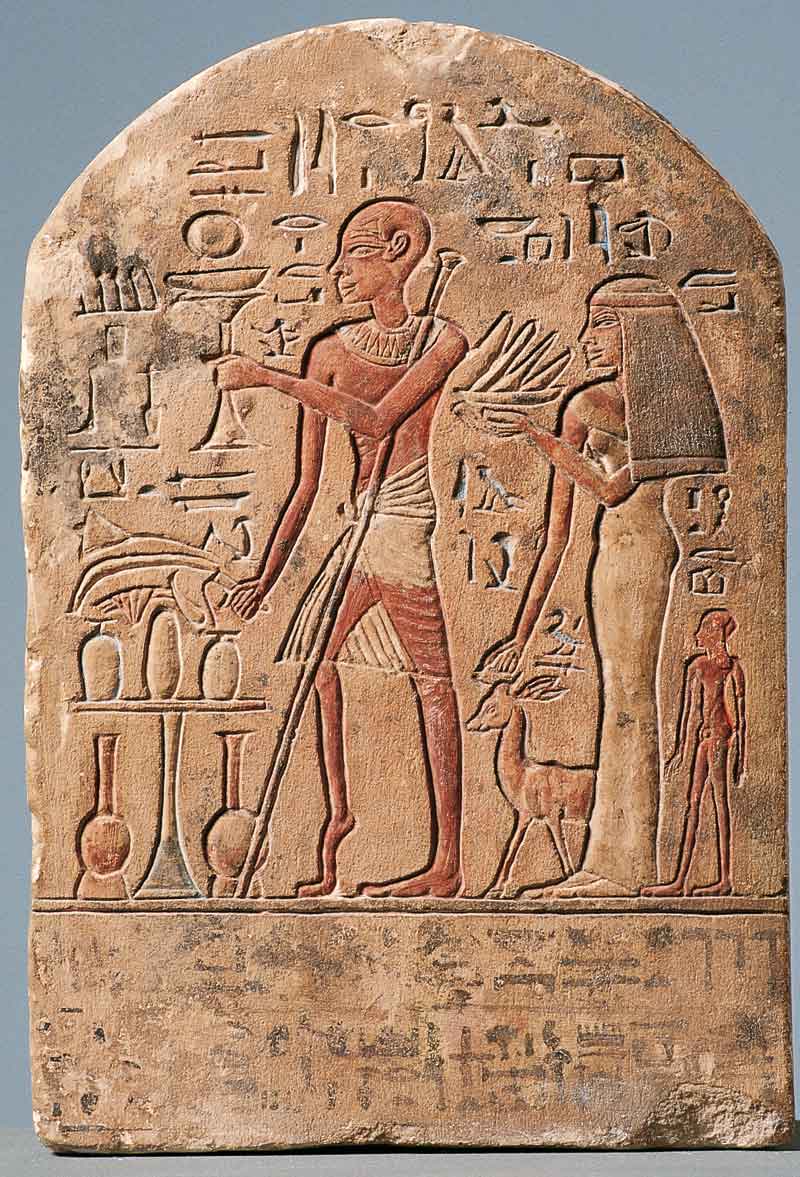 The scene in the tomb of Userhat dates from the
reign of Amenhotep II, and would therefore be the oldest (by a little
...) known representation in the world of the aftermath of
poliomyelitis, confirming the existence of this illness in these remote
times.
The scene in the tomb of Userhat dates from the
reign of Amenhotep II, and would therefore be the oldest (by a little
...) known representation in the world of the aftermath of
poliomyelitis, confirming the existence of this illness in these remote
times.




